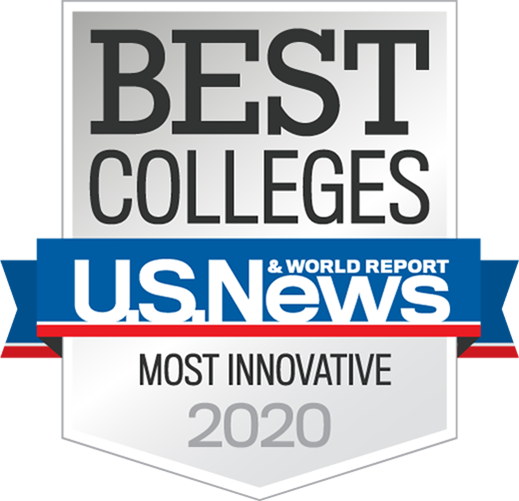Using Video to Engage and Inform: Formal and Informal Media Types in Online Courses

By Christine Moore, Aubrey Holland, and Robert Behnke
Media, both formal and informal, plays a crucial role in modern education. The prevalence of platforms like YouTube, the second largest search engine, and TikTok, used by 26% of U.S. adults under 30 for news, underscores the dominance of video content in our daily lives. Integrating media into educational courses can significantly enhance student engagement and retention. Formal and informal media each serve distinct purposes within an educational context, complementing each other to create a well-rounded learning experience.
Formal media is characterized by its high production quality and polished presentation. Typically produced by professional teams, formal media includes elements like main lecture videos, professional interviews, and demonstrations. These pieces are designed to be evergreen, providing consistent and reusable content across multiple course iterations.
Informal media is more spontaneous and less polished. It is created by instructors to address immediate needs or provide timely updates. Examples include video announcements, quick feedback sessions, and ad-hoc explanations of current events or specific course topics. Informal media is valued for its authenticity and personal touch, offering students a more direct connection with their instructors. While formal media establishes a stable and professional foundation for course content, informal media enhances engagement by adding a personal and responsive layer to the learning experience.
Together, both forms of media ensure that online courses are both high-quality and dynamic, meeting diverse educational needs.
Formal Media in Online Courses

Formal media refers to high-production-quality content typically produced by professional teams. Such media is designed to be evergreen, meaning it can be reused across multiple sessions without needing updates. Formal media includes main lecture content, introduction videos, demonstrations, interviews, and special projects.
Benefits of including formal media in your course:
1. Technical Quality: Formal media ensures high accessibility standards, including proper lighting, audio quality, font sizes, colors, and captions.
2. Professionalism: High production value enhances the perceived quality and credibility of the course.
3. Creative Flexibility: Formal media allows for varied content types, such as podcasts, animations, and interactive media.
4. Ease of Creation: The new media team manages the technical aspects, allowing faculty to focus on content delivery.
Tips for creating formal media:
1. Preparation: Instructors should focus on content preparation, as technical aspects are handled by the media team.
2. Studio Quality: Utilizing professional studios ensures high-quality production, making the media visually and audibly appealing.
3. Evergreen Content: Avoid using time-specific references to make videos reusable.
Informal Media in Online Courses

Informal media is created more spontaneously by instructors and is used to supplement formal media to identify or discuss class trends, clarification, feedback or additional instructions for critical assignments. Informal media includes announcements, feedback, module overviews, virtual field trips, or comments on current events.
Benefits of including informal media in your course:
1. Authenticity: Informal media provides a personal and organic feel, showcasing the instructor’s personality and real-time engagement.
2. Flexibility: It allows for quick updates and immediate responses to student needs or current events.
3. Enhanced Instructor Presence: Videos and announcements directly from the instructor can increase students’ sense of connection and engagement with the course.
Tips for creating informal media:
1. Simplicity: Less planning is needed; focus on the message rather than production quality.
2. Personal Touch: Embrace spontaneity and authenticity. It’s okay to show your personality and even minor imperfections.
3. Engagement: Use informal media to address immediate concerns or share timely updates, enhancing real-time engagement.
Boost “Instructor Presence” with Your Media
Instructor presence is a critical element in online education. It involves being actively engaged with students through both real-time interactions and recorded media. Effective instructor presence helps students feel connected, reducing feelings of isolation and increasing motivation and persistence.
Simple ways to boost instructor presence with media:
1. Instructional and Demonstration Video: Create these detailed explanations and walk-through videos for complex assignments and topics.
2. Video Announcements: Use video announcements to communicate directly with students, showing empathy and real-time engagement.
3. Video Feedback: Personalized media/video feedback through the Canvas video recorder replicates the face-to-face interaction, making the feedback more impactful.
For more resources about Instructor Presence, visit ASU’s Teach Online.
Enhancing Student Support in Your Media
Media can significantly enhance accessibility, diversity, inclusion, and representation in online courses. Providing captions, transcripts, visual aids, and alternative formats like podcasts can support students with varying needs, including those with neurodiversities, language barriers, or lifestyle constraints.
Ways to increase student support with media:
1. Accessibility Enhancements: Use captions, transcripts, and visual aids to support students with language barriers, those working on English proficiency, and those with diagnosed or undiagnosed neurodiversities. These tools assist in understanding context, vocabulary, pronunciation, and grammar.
2. Inclusive Learning Materials: Incorporate diverse and representative media, such as interviews, panels, and guest lectures, to expose students to a variety of viewpoints and create a richer context of knowledge. This helps all students see themselves as potential experts in the field.
3. Flexible Learning Formats: Offer alternative media formats like podcasts and recorded lectures that can be accessed on-the-go. Including PDFs of lecture slides and video transcripts supports students with limited internet bandwidth. This flexibility supports students with lifestyle constraints, such as those balancing work, family commitments, or who need to study in non-traditional environments.
Conclusion
Incorporating both formal and informal media into online courses enriches the learning experience, increases student engagement, and supports diverse learning needs. This blend of formal and informal media strategies not only enhances the educational experience but also aligns with the evolving digital landscape where video content is paramount. By leveraging high-quality production for key content and maintaining authenticity through spontaneous media, educators can create a dynamic and effective online learning environment.
The EdPlus New Media team provides expert support for recording and presenting course materials to enhance student engagement and learner persistence. This team offers professional audio and video recording along with graphic design and animation services to partner with faculty to create high-quality educational content. See the New Media team’s website for more info and booking.
Christine Moore, Aubrey Holland, and Robert Behnke are a part of the Instructional Design and New Media team at EdPlus at ASU.


